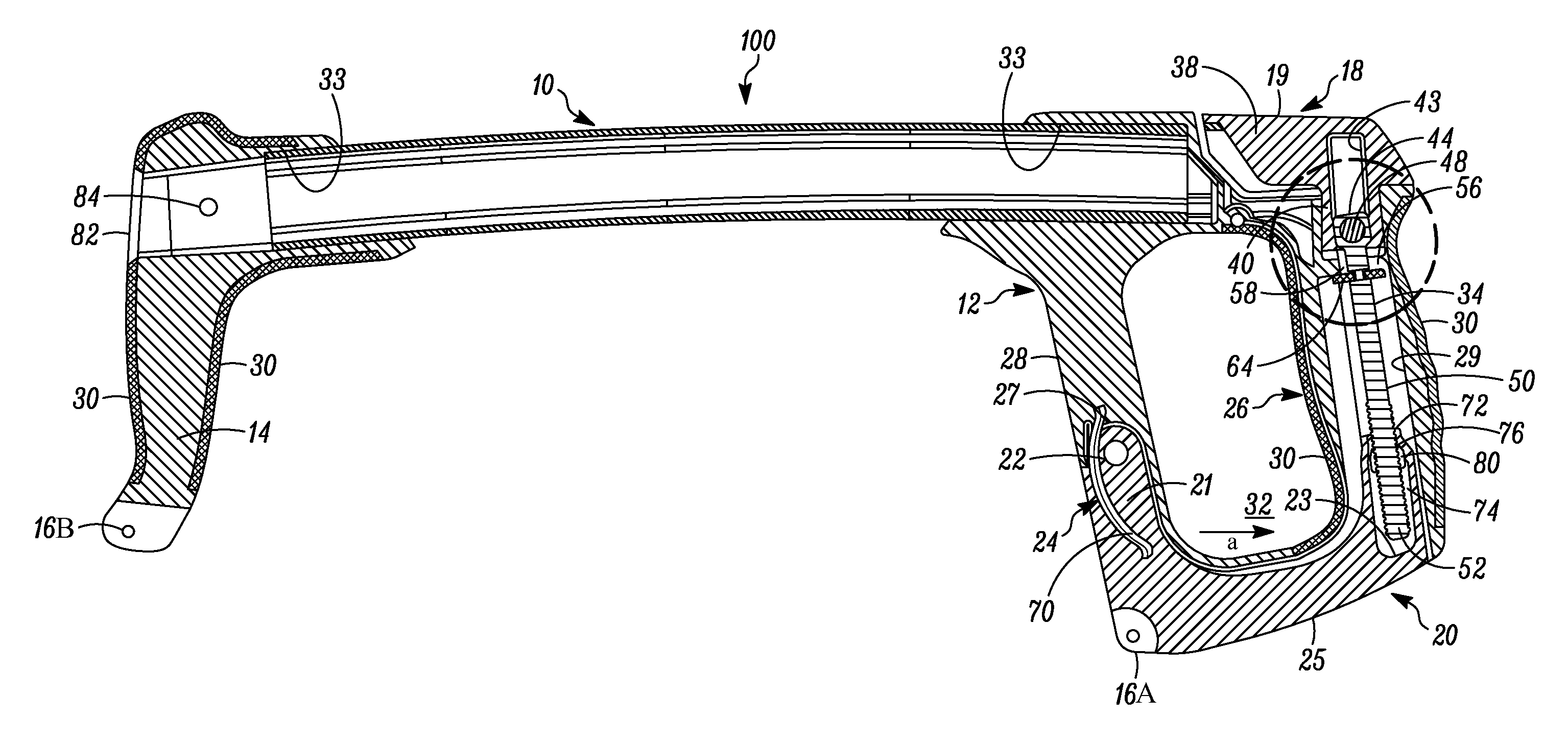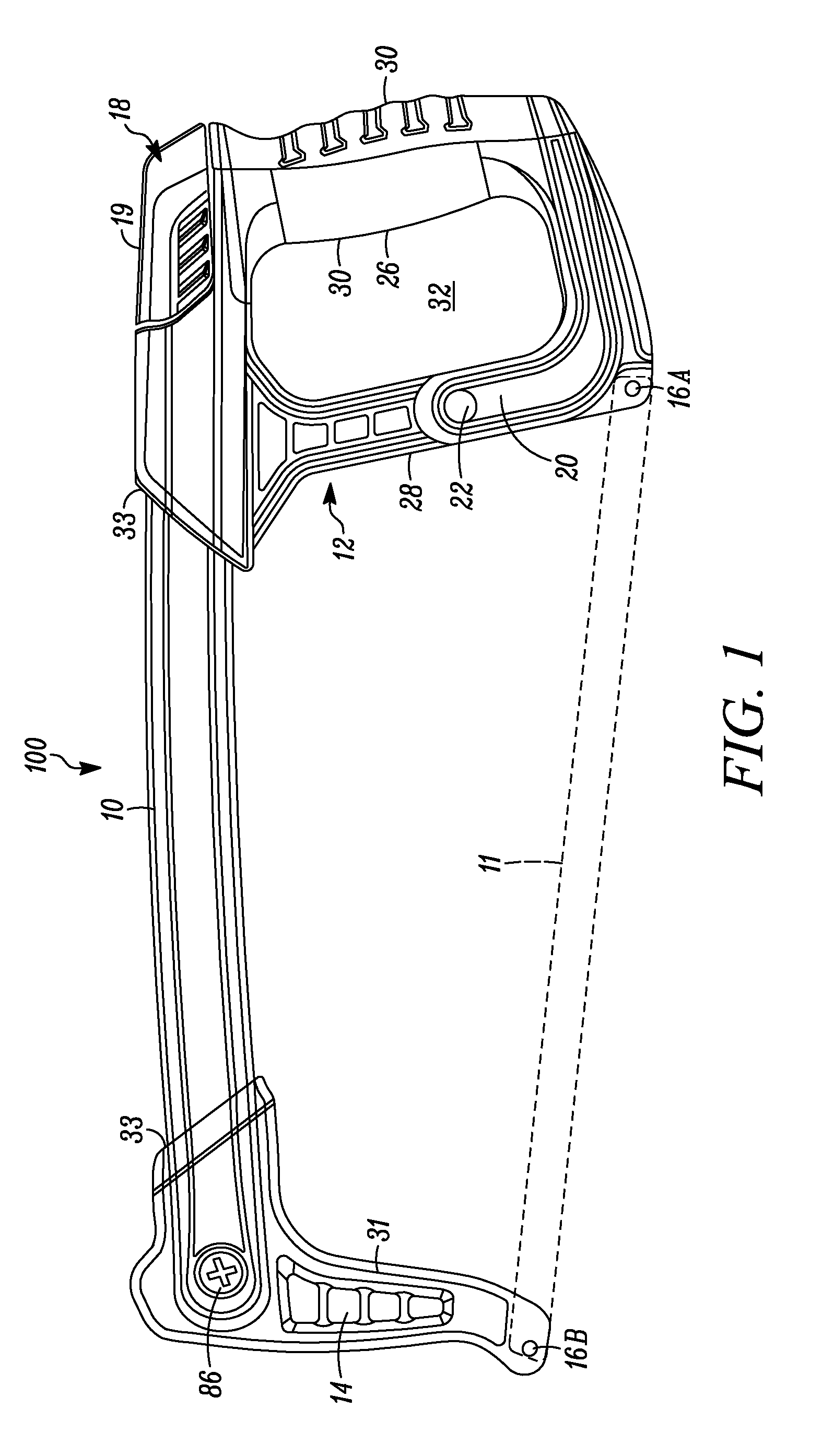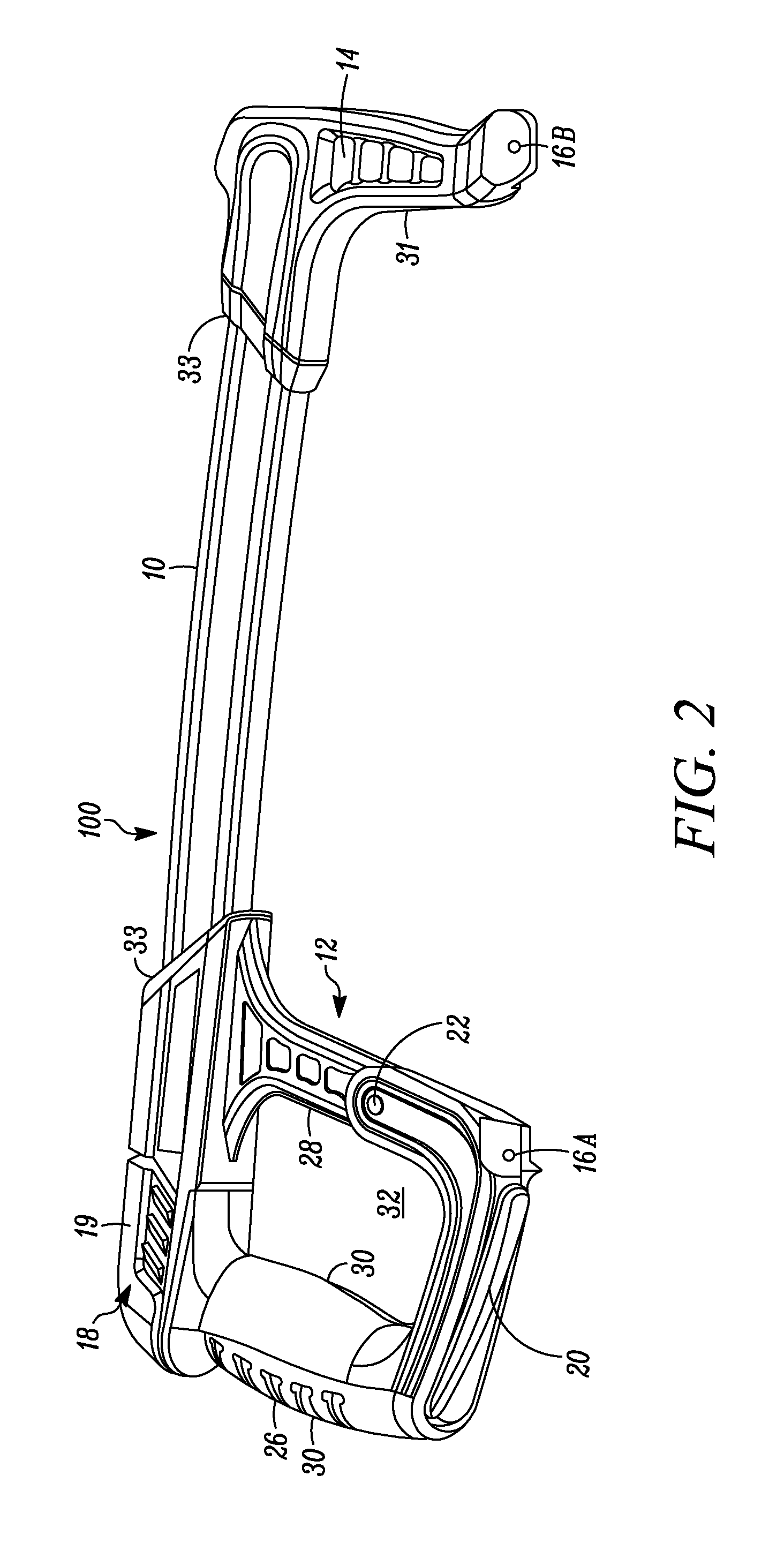Hacksaw with blade tensioning mechanism
a technology of tensioning mechanism and hacksaw, which is applied in the field of hacksaws, can solve the problems of affecting the use of hacksaw, difficult to maintain a relatively constant tension of blades, and difficult to change blades with some prior art mechanisms, etc., and achieves simple, effective and/or safe blade tensioning and blade changes, and prevents vertical movement
- Summary
- Abstract
- Description
- Claims
- Application Information
AI Technical Summary
Benefits of technology
Problems solved by technology
Method used
Image
Examples
Embodiment Construction
[0030]In FIGS. 1 and 2, a hacksaw embodying the present invention is indicated generally by the reference numeral 100. The hacksaw 100 is usable with elongate blades to cut workpieces. As shown in FIGS. 1 through 3, the hacksaw 100 comprises a frame including an elongate top frame arm 10, a proximal handle 12 fixedly secured to the proximal end of the top frame arm 10, and a distal handle and blade mount 14 fixedly secured to the distal end of the top frame arm 10. The proximal handle 12 includes a proximal blade mount 16A for mounting thereto one end of a blade 11 (shown in broken lines in FIG. 1), and the distal handle and blade mount 14 includes a distal blade mount 16B for mounting thereto the other end of the blade 11. The proximal handle 12 includes a blade tensioning assembly 18 for adjusting the tension applied to the blade 11 mounted to the blade mounts 16A, 16B. The blade tensioning assembly 18 includes a manually engageable blade tensioning lever 19 that is rotatably moun...
PUM
| Property | Measurement | Unit |
|---|---|---|
| radius | aaaaa | aaaaa |
| radius | aaaaa | aaaaa |
| width W2 | aaaaa | aaaaa |
Abstract
Description
Claims
Application Information
 Login to View More
Login to View More - R&D
- Intellectual Property
- Life Sciences
- Materials
- Tech Scout
- Unparalleled Data Quality
- Higher Quality Content
- 60% Fewer Hallucinations
Browse by: Latest US Patents, China's latest patents, Technical Efficacy Thesaurus, Application Domain, Technology Topic, Popular Technical Reports.
© 2025 PatSnap. All rights reserved.Legal|Privacy policy|Modern Slavery Act Transparency Statement|Sitemap|About US| Contact US: help@patsnap.com



